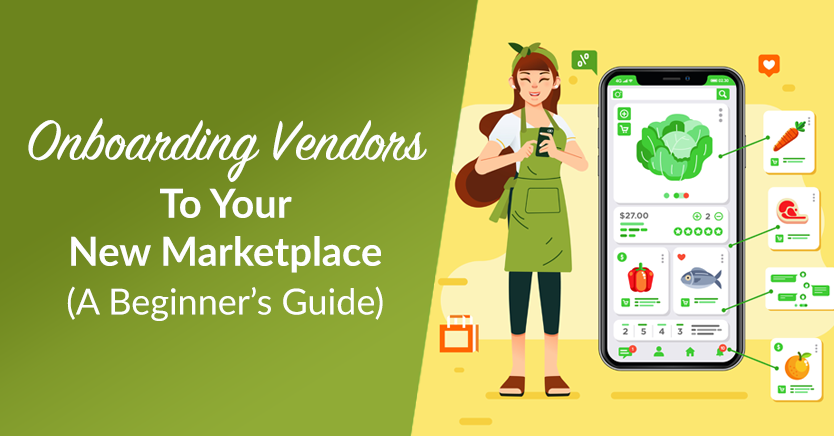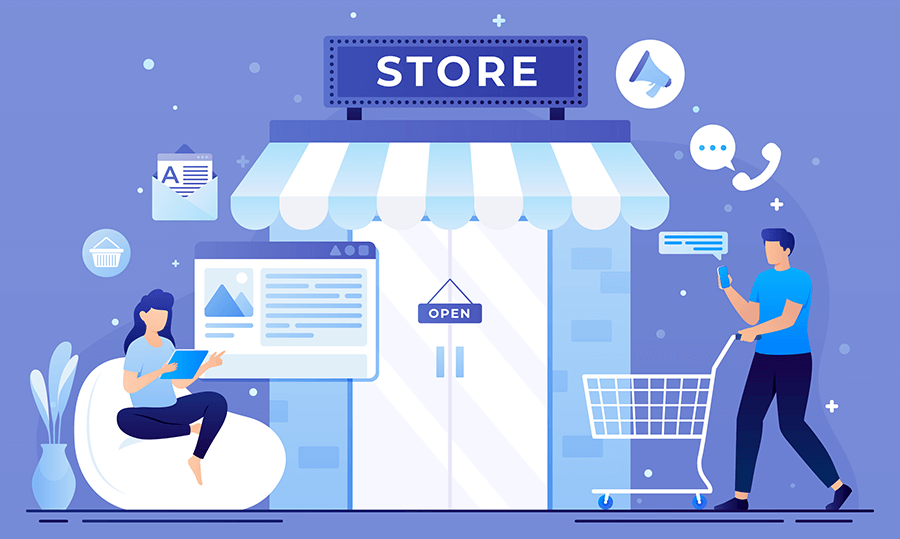
Starting a new online multi-vendor marketplace? Then know you’re up for one exciting ride! Sure, it may seem scary to know that the success of your platform requires careful planning and execution. But with sound strategies in place, you can ensure the success of every step – including the process of onboarding vendors.
The onboarding process is crucial if you want to launch a successful marketplace. After all, it sets the stage for long-term relationships and lays the foundation for a thriving marketplace ecosystem. At the end of the day, it can bring in the sales that you need to enjoy healthy growth for your platform.
In this beginner’s guide, we’ll explore the benefits of proper onboarding. Then, we’ll provide practical steps to help you onboard vendors to your new online multi-vendor marketplace. So let’s jump right into it!
Onboarding Vendors: What Does It Mean?
In the context of an online multi-vendor marketplace, onboarding refers to the process of bringing new vendors onto the platform and guiding them through the necessary steps to get their products or services listed and ready for sale.
Basically, onboarding vendors involves familiarizing them with the marketplace’s policies, guidelines, and features. It means equipping vendors with the knowledge and tools they need to effectively navigate the platform and reach their target customers. In short, the process is about supplying vendors with everything they require for success.
The goal of onboarding vendors is to establish a strong, trusting relationship between the marketplace and its vendors. Ultimately, a well-executed onboarding process sets the foundation for a thriving multi-vendor marketplace.
What onboarding vendors involves
The onboarding process typically begins with vendor registration, where vendors provide their information and agree to the marketplace’s terms and conditions. Vendors may be required to complete additional steps such as verifying their identity, setting up their store profile, and connecting payment methods. Furthermore, they may need to provide relevant documentation, such as business licenses or product certifications.
Onboarding also involves educating vendors about the marketplace’s rules and guidelines for product listings, pricing, shipping, customer support, and other key aspects. This ensures consistency and quality across the platform, creating a positive experience for buyers and maintaining the reputation of the marketplace.
Additionally, onboarding often includes training and support to help vendors optimize their presence in the marketplace. This can involve providing resources such as tutorials, webinars, or knowledge bases that guide vendors on how to create compelling product listings, leverage promotional tools, and address customer inquiries effectively. Personalized support channels, such as dedicated onboarding managers or customer service representatives, may be offered to assist vendors during their initial setup and ongoing operations.
Benefits Of Onboarding Vendors Properly
The process of onboarding vendors is vital to your online marketplace’s success. To hammer this point home, let’s discuss the various ways this practice can benefit your business.
1. Trust and relationship building
When you establish clear communication channels and provide support during the onboarding process, you can build strong relationships with vendors from the outset.
In short, effective onboarding fosters trust between your marketplace and vendors. And as we all know, trust is key to smooth and mutually beneficial interactions between businesses.
2. Enhanced vendor experience
A well-structured onboarding process can streamline vendor operations, thus helping them better understand your marketplace’s features, policies, and procedures.
This, in turn, improves the overall vendor experience and boosts their confidence in your platform. And the happier your vendors are, the more likely they’ll stay loyal to you and do their best to help your platform thrive.
3. Quality assurance
What happens when you set clear expectations and guidelines when onboarding vendors? Basically, you help them meet your marketplace’s requirements and adhere to quality standards.
As a result, your marketplace grows efficient at meeting the demands of customers, leading to increased customer satisfaction. This can do wonders for your platform’s reputation and credibility, which can bring even more shoppers to your proverbial doorstep!
4. Faster time-to-market
Efficient onboarding procedures enable vendors to start selling on your platform more quickly. This reduces the time and effort required for vendors to list their products, ultimately attracting more sellers to your marketplace.
How To Onboard Vendors (6 Best Strategies)
To maximize favorable results when onboarding vendors, it’s important to employ multiple strategies. Below, we explore the most effective of these strategies.
1. Develop an onboarding plan
A well-defined plan for onboarding vendors is crucial to ensure a smooth and efficient vendor onboarding process.
Start by creating a comprehensive outline that details each step of the onboarding journey – including vendor registration and beyond. This entails defining the required documents, registration forms, and any specific criteria that vendors must meet. Also, we recommend creating a checklist or an onboarding portal where vendors can track their progress and complete each necessary task.
Of course, there are many other things you should do. For example, it’s a good idea to construct a training schedule detailing what, when, and how you’ll teach your vendors to use your platform. Also, consider giving incentives that will encourage them to keep doing business with you.
Lastly, familiarize yourself with the common mistakes people make when launching a marketplace. This should help you determine what you can do to prevent or solve such problems.
2. Simplify the registration process
The registration process should be straightforward and user-friendly to encourage vendors to join your marketplace.
For this reason, minimize the number of steps required to sign up. Only collect vendor information that is relevant to their relationship with your marketplace and their ability to do business. This simplification helps reduce friction and increases the chances of successful vendor onboarding.
In addition, provide clear instructions and tooltips to guide vendors through the registration process. This will ensure that all the information that they provide is accurate and pertinent to your professional relationship.
3. Provide clear vendor guidelines
When it comes to onboarding vendors, transparency is key. Thus, clearly communicate your marketplace’s policies, terms of service, and any specific requirements to vendors. This includes guidelines for product listings, pricing, shipping, and customer support.
Also, offering a detailed vendor handbook or knowledge base can serve as a valuable resource for vendors. After all, this can answer their most common questions and guide them throughout their journey. Additionally, you should provide vendors with examples of high-quality listings to help them understand and meet your marketplace’s standards.
4. Offer personalized support
When onboarding vendors, ensure that you provide them with prompt and personalized support.
Therefore, offer channels for direct communication, such as email or live chat, to address their questions or concerns. Make sure you respond quickly to inquiries, as this demonstrates your commitment to vendor success and helps build trust.
If this responsibility is too much for you to handle alone, consider acquiring the assistance of dedicated onboarding managers. These experts can guide vendors through the onboarding process by assisting with any technical issues and offering tips to optimize their experience on your marketplace.
5. Conduct training and education
To empower vendors to succeed on your platform, provide them with training and educational resources.
Thus, create video tutorials, host webinars, and provide access to self-paced learning materials. These should be designed to familiarize vendors with your marketplace’s features and functionalities. Furthermore, they should educate them on how to optimize product listings, leverage promotional tools, and use analytics to enhance their sales performance.
By offering comprehensive training, you equip vendors with the knowledge they need to effectively navigate and make the most of your marketplace.
6. Test and optimize
Continuous improvement is key to success when onboarding vendors.
For this reason, you must regularly evaluate and refine your onboarding process based on vendor feedback and performance metrics. This entails analyzing data such as vendor retention rates, time to first sale, and overall vendor satisfaction to identify areas for improvement.
Implementing feedback loops ensures that you can address any pain points. In addition, it lets you optimize the onboarding experience and increase the likelihood of long-term vendor success.
Conclusion
Efficiently onboarding vendors to your new online multi-vendor marketplace is essential for its success. Notably, it can provide your platform with various benefits, including the following:
To enjoy optimal results when onboarding vendors, we recommend that you:
- Develop an onboarding strategy
- Simplify the registration process
- Provide clear vendor guidelines
- Offer personalized support
- Conduct training and education
- Test and optimize
With an expertly implemented onboarding strategy, your marketplace will attract quality vendors, deliver an exceptional user experience, and ultimately drive long-term success.
Do you have any questions about onboarding vendors? Let us know in the comments section below!







